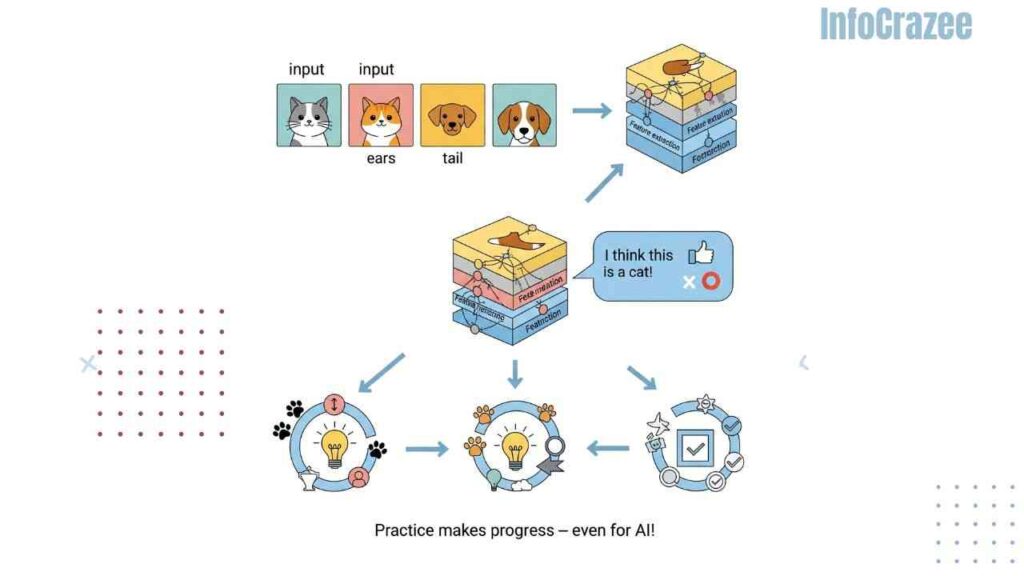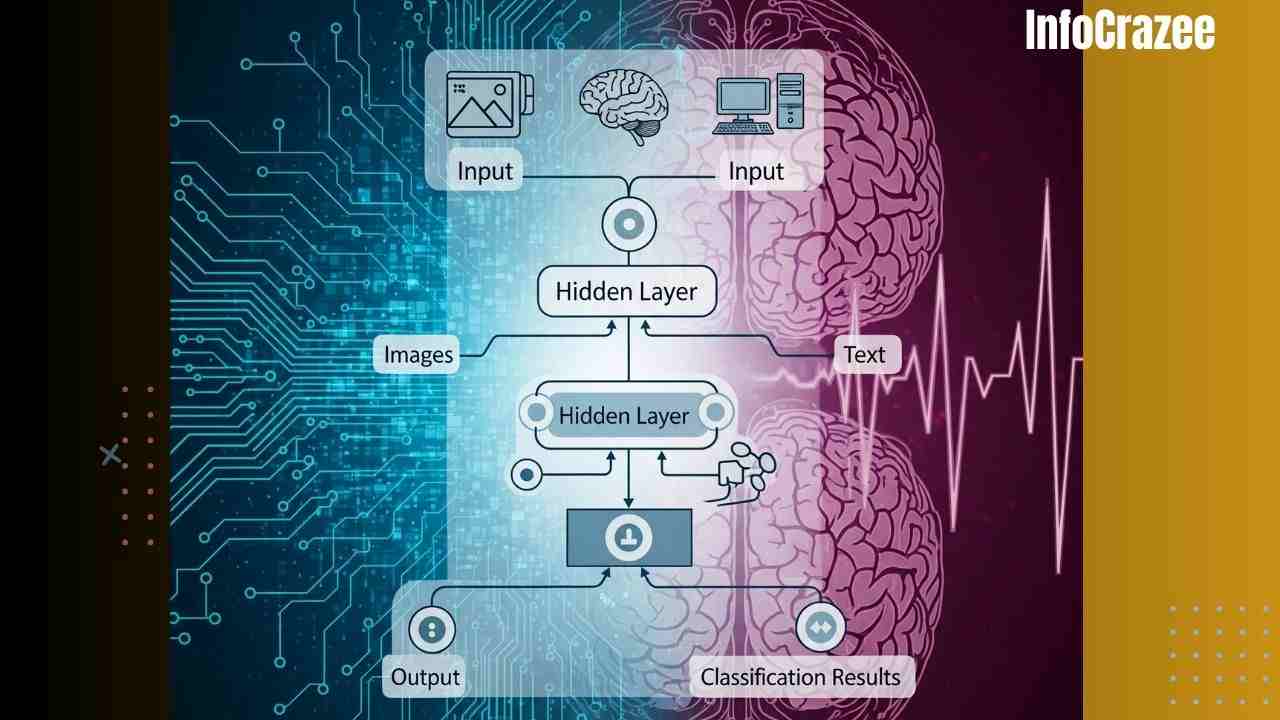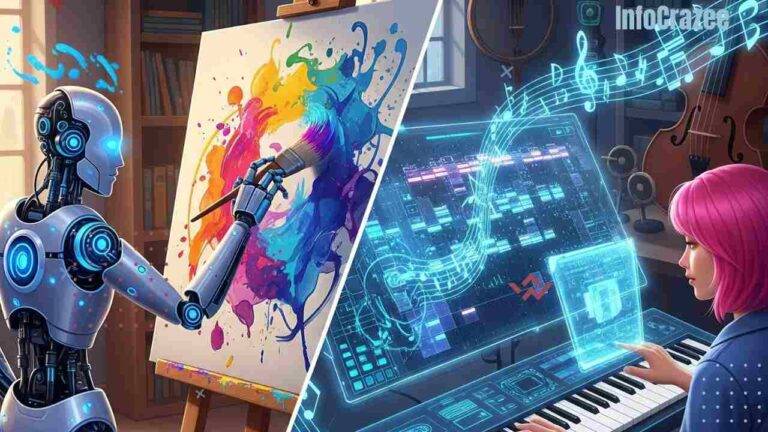Understanding Neural Networks – How AI Learns to Think Like Us
If you’ve ever wondered how AI can recognize faces, translate languages, or even suggest your next Netflix binge, the answer usually involves something called a neural network.
Sounds technical? Don’t worry. At its core, a neural network is just a fancy name for a system that tries to copy how our brains work — at least a little. In this article, we’ll explain what neural networks are, how they learn, and how they’re changing the world around us. No confusing tech jargon. Just clear, human talk.
Let’s dive in.
What is a Neural Network, Really?
Imagine a bunch of tiny “digital brain cells” working together to figure things out — that’s basically what a neural network is.
In simple terms:
- It’s a computer system made up of layers of “neurons” (little processing units).
- These neurons are connected — kind of like a web — and they talk to each other.
- They learn by adjusting the strength of these connections based on what works and what doesn’t.
Think of it like how a baby learns: touch something hot once — lesson learned. A neural network goes through trial and error until it starts getting answers right.
Why It’s Called a “Neural” Network
The name comes from the human brain. In our brains, we have billions of nerve cells (neurons) that pass signals to each other. AI doesn’t come close to matching our brain’s power, but neural networks try to mimic the way our neurons talk and learn.
That’s why we say AI “learns” — it’s not magic. It’s pattern recognition, repetition, and improvement, just like us.
How Neural Networks Learn (Without Getting Too Technical)
Let’s say you’re teaching a neural network to tell the difference between cats and dogs.

Here’s how the learning process might go:
- Input
You show it a bunch of images — some cats, some dogs. - Processing
It looks for features like ears, tails, fur, eyes. - Guess
It takes a guess: “I think this is a cat.” - Feedback
If it’s wrong, it gets corrected. If it’s right, it strengthens the connections it used to get there. - Repeat
Do this thousands (or millions) of times, and it gets really good at it.
This process is called training. The more data you give it, the better it gets — kind of like how we get better with practice.
Real-World Uses of Neural Networks
Neural networks are everywhere, even if you don’t realize it. Here are some ways they’re helping us every day:
1. Voice Assistants
- Siri, Alexa, and Google Assistant understand your voice and answer questions thanks to neural networks.
2. Medical Diagnosis
- AI can look at scans (like X-rays or MRIs) and spot problems — sometimes faster than human doctors.
3. Self-Driving Cars
- Neural networks help cars understand the road, avoid people, read traffic signs, and make decisions in real time.
4. Fraud Detection
- Banks use AI to flag suspicious activity based on patterns that might be hard for humans to catch.
5. Language Translation
- Tools like Google Translate use neural networks to understand and translate languages more naturally.
The Different Layers (How It’s Structured)
Think of a neural network like a sandwich:

- Input Layer: This is where the data goes in (like an image or voice).
- Hidden Layers: These do the thinking and decision-making (usually several layers deep).
- Output Layer: This gives the result (like “this is a cat”).
Each layer passes info to the next and adjusts based on whether the guess was right or wrong. The “hidden” layers are where the magic happens — the system figures out what matters most in the data.
Why It’s So Powerful (and a Little Scary)
Neural networks aren’t just fast — they’re getting smarter all the time. As we feed them more data, they can learn:
- How to detect emotions in voices
- How to predict future trends (like stock prices)
- How to generate art, music, and even human-like
But with great power comes great responsibility. Neural networks can also learn bias if the data we give them isn’t fair — that’s why it’s important to use AI thoughtfully and ethically.
The Bottom Line
Neural networks are a big reason AI feels so smart today. They help machines learn, improve, and do tasks we once thought only humans could do.
You don’t need to be a coder or scientist to appreciate how this works. Just knowing the basics helps you understand the technology shaping our future.
And hey, next time your phone recognizes your face in a selfie or your shopping app recommends the perfect shoes — now you’ll know how it all works behind the scenes.
FAQs
1. Are neural networks the same as AI?
Not quite. AI is the big idea — making machines think smart. Neural networks are one way AI learns and makes decisions, like a specific tool in the AI toolbox.
2. Can neural networks really think like humans?
They can mimic some ways we learn and recognize patterns, but they don’t understand or feel like we do. They’re powerful, but not conscious.
3. How do I get started with neural networks if I’m curious?
There are tons of free online tools and beginner-friendly courses. Try platforms like to experiment without coding.
Final Thoughts from Infocrazee
At Infocrazee, we love breaking down big ideas like AI so they actually make sense. Neural networks are changing how machines “think” — and now, you’ve got a front-row seat to that revolution.
So whether you’re a curious learner, a future developer, or just someone who loves cool tech — remember, the future isn’t just for experts. It’s for anyone who wants to understand how things work.






